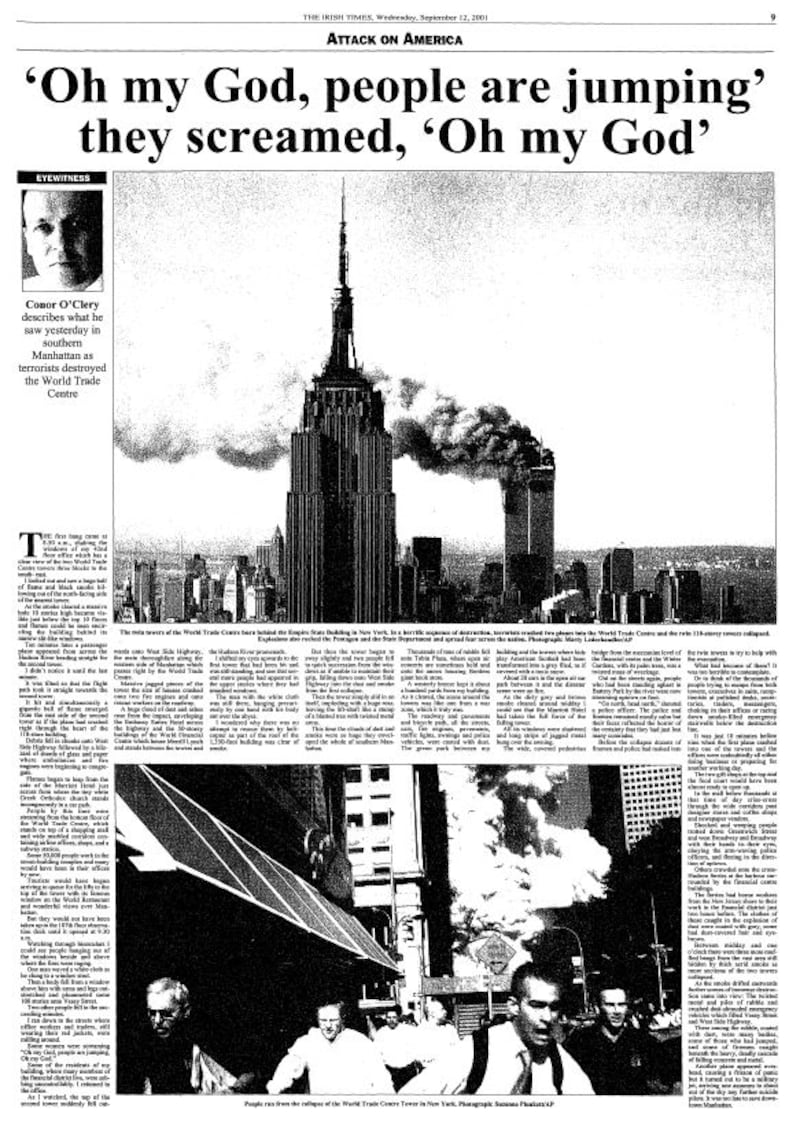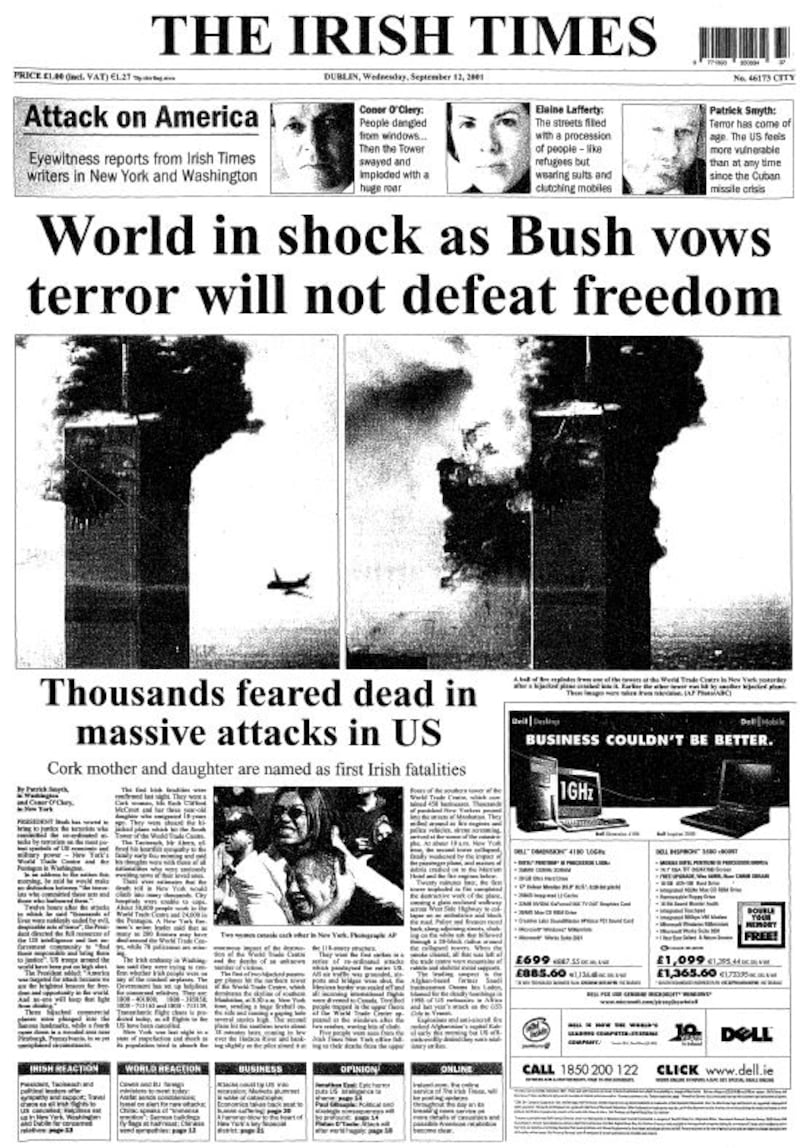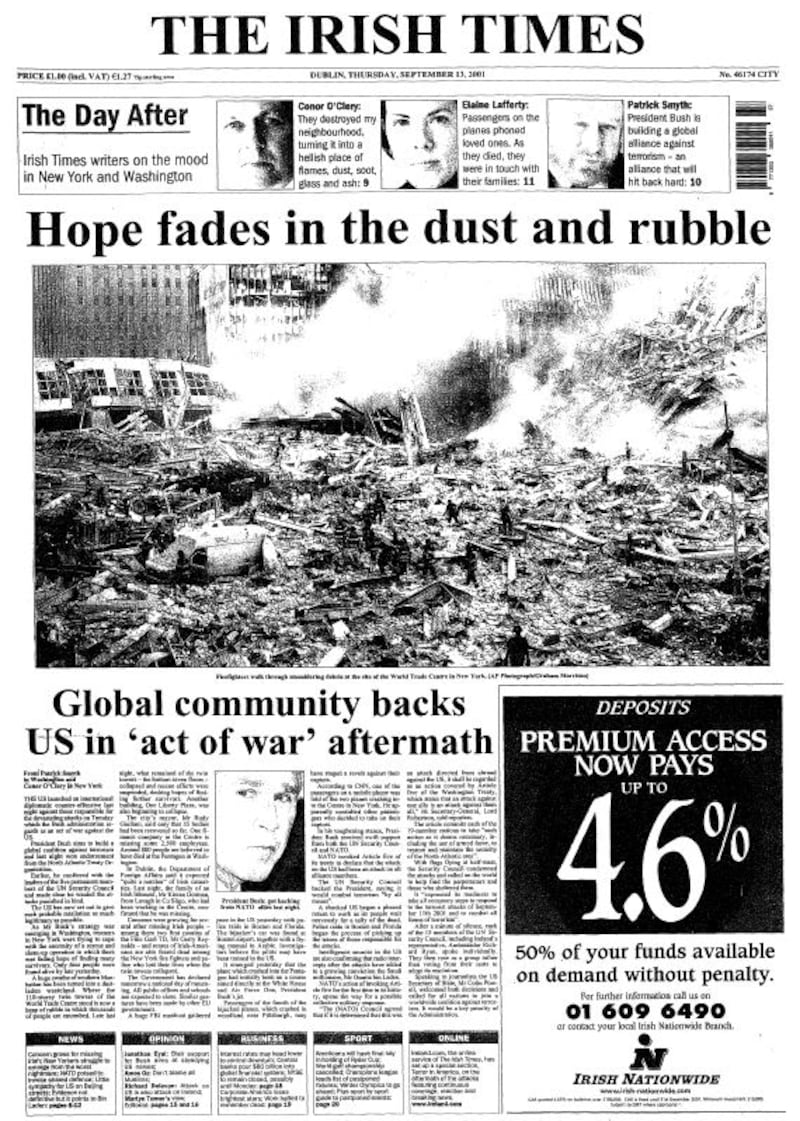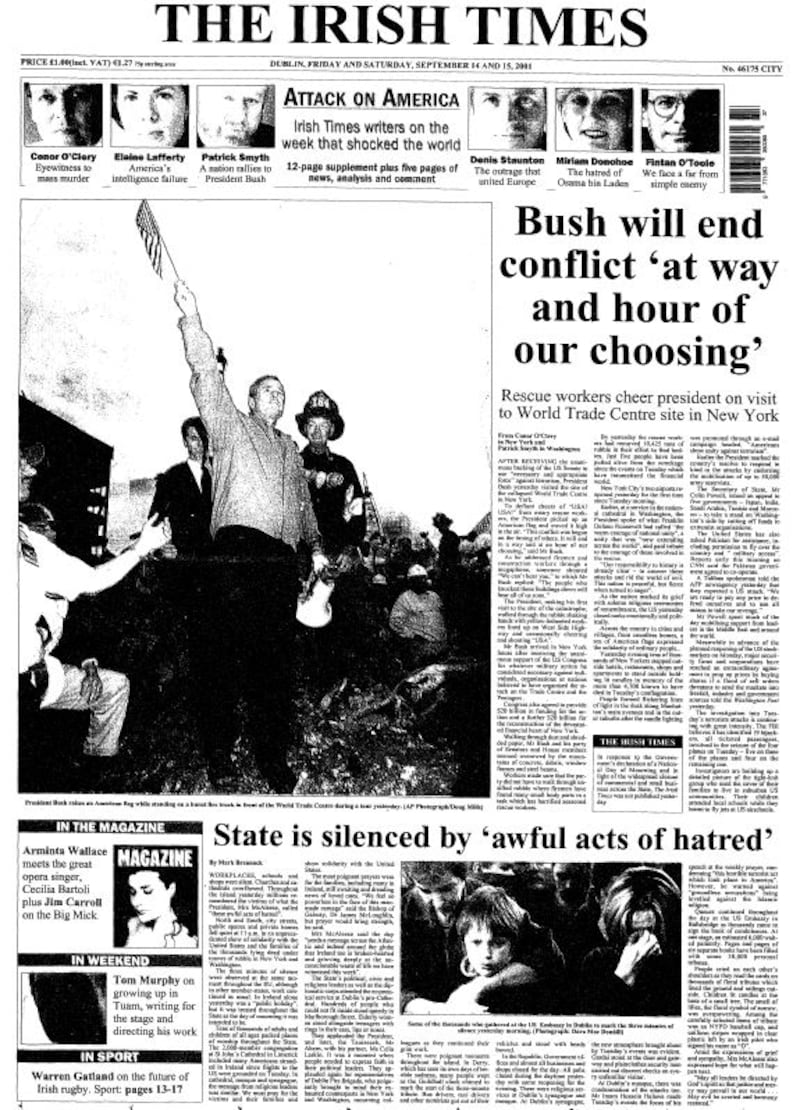Few journalists have been as direct an eyewitness to seminal events in history as Conor O’Clery was to the 9/11 attacks in New York.
Mr O'Clery, then The Irish Times US correspondent, was based in Manhattan when the first plane hit the North Tower.
“The first bang came at 8.50am shaking the windows of my 42nd floor office which has a clear view of the two World Trade Centre towers three blocks to the south-east,” he wrote in one of the most vivid first paragraphs that has ever appeared in this newspaper.
Ten minutes later he noticed a passenger plane appearing across the Hudson River heading straight for the second tower.

“I didn’t notice it until the last minute. It was tilted so that the flight path took it straight through the second tower. It hit and simultaneously a gigantic ball of flame emerged from the east side of the second tower as if the plane had crashed right through the heart of the 110-storey building.
“Debris fell in chunks on to West Side Highway followed by a blizzard of shards of glass and paper where ambulances and fire engines were beginning to congregate.”
He continued: “Watching through binoculars I could see people hanging out of the windows beside and above where the fires were raging. One man waved a white cloth as he clung to a window strut. Then a body fell from a window above him with arms and legs and outstretched and plummeted some 100 stories onto Vesey Street. Two other people fell in the succeeding minutes.”

While writing this vivid first-hand account of the fall of the Twin Towers, Mr O'Clery also helped to contribute to the front page story along with Patrick Smyth, who was in Washington.
The front-page story confirmed the first identified Irish fatalities of 9/11 – Ruth Clifford McCourt from Cork and her four-year-old daughter Juliana were on board the hijacked plane which hit the South Tower of the World Trade Centre.
Local reaction was relegated to page 13 of the paper with condemnation of the attacks from the Taoiseach Bertie Ahern, President Mary McAleese and the leader of Fine Gael Michael Noonan. The newspaper reported that gardaí had increased security at the US embassy and flights to the US were cancelled.
On September 13th The Irish Times reported on the decision by Mr Ahern to declare a national day of mourning for the following day. Retail outlets, banks, schools, pubs and many other businesses all readily agreed to close.

This created a dilemma for the board of The Irish Times as the newspaper's editor Conor Brady was in the United States at the time and communication was difficult following the terror attacks.
The board decided that no newspaper would be published on Friday, September 14th, 2001 to coincide with the national day of mourning. It was the first time since the Easter Rising of 1916 that The Irish Times was not published.
The Irish Times eventually appeared on Saturday, September 15th with comprehensive accounts of how the national day of mourning had been observed across the country.

Then political correspondent Mark Brennock noted that "north and south, city streets, public spaces and private homes fell quiet at 11am in an unprecedented show of solidarity with the United States and the families of the thousands lying dead under tonnes of rubble in New York and Washington".
Public grief in Ireland was manifested by the estimated 6,000 people who queued outside the US embassy in Ballsbridge to sign the books of condolences. The figure swelled to 30,000 over time.
Among them was a Texas man Anthony Powers who was living in Kildare at the time. He expressed desperation as many did about the fate of the people who were missing.
“Right now I’m waiting to hear from four friends who were working in the World Trade Centre. I’ve called home – time seemed to stop – but they are missing. I feel so distant from my country in their time of need.”
The State’s political, civic and religious leaders attended an ecumenical service at Dublin Pro-Cathedral.
On Saturday, September 15th The Irish Times devoted a full page to reports around the country of people coming out to pay their respects to those who had died on 9/11.
The attacks also represented a "sea change" in terms of The Irish Times' breaking news coverage, according to journalist Conor Pope who was on duty that day.
Newspaper websites at the time did not enjoy the pre-eminence that they do today.
The Irish Times website was updated around the clock for several days after the attack and it was one of the first time that user-generated content was used. Readers were encouraged to recount their experiences with first-hand accounts of where they were and what they were doing when it happened.








